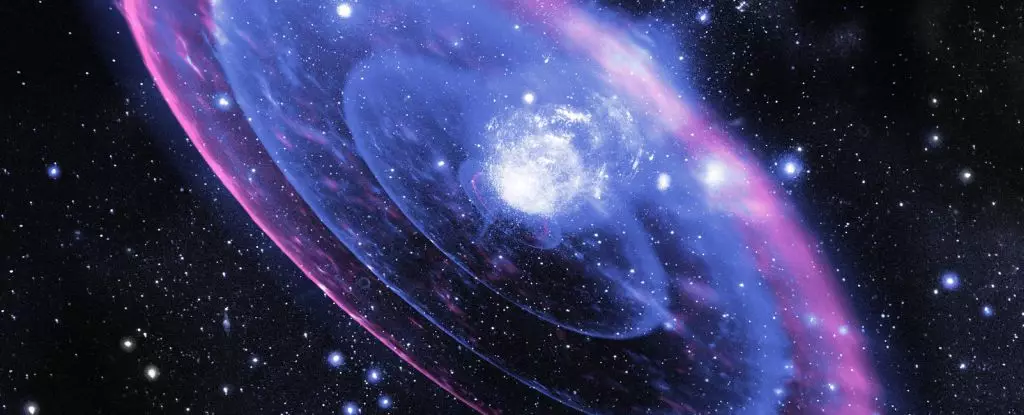A microscopic grain of olivine recovered from an ancient meteorite in Antarctica has provided researchers with a glimpse into a distant past. This unique mineral, known as a presolar grain, possesses an isotope composition that suggests it originated from a star that perished long before the birth of our Solar System. Unlike typical materials found in our cosmic neighborhood, presolar grains offer invaluable insights into the diverse stellar environments within the galaxy and the celestial bodies that emerge from them.
Led by astrogeologist Nicole Nevill of the Lunar and Planetary Institute in Houston, a team of researchers utilized advanced technology known as atom probe tomography to identify the olivine presolar grain embedded within an Antarctic meteorite. The results of their analysis were groundbreaking, as the isotope ratios of magnesium present in the grain were unlike anything observed within our Solar System. Notably, the magnesium isotopic ratio of 3,025 discovered in this grain far exceeded previous records, indicating a distinct origin from a hydrogen-burning supernova – a newly identified type of star.
Meteorites serve as celestial messengers, delivering fragments of the cosmos to Earth and preserving clues about their composition and formation. While most meteorites originate from within our Solar System, rare anomalies such as presolar grains offer a window into alien realms beyond our immediate surroundings. The discovery of the olivine presolar grain within the Allan Hills 77307 meteorite underscores the importance of these extraterrestrial relics in expanding our knowledge of the universe.
By examining the speck of olivine measuring a mere 400 by 580 nanometers, researchers were able to ascertain its exceptional magnesium-25 content – a telltale sign of its unique origin. The utilization of atom probe tomography allowed for unprecedented precision in analyzing the presolar grain, revealing insights that were previously inaccessible. The high magnesium isotopic ratio present in the grain points towards its formation in a cataclysmic event such as a supernova, shedding light on ancient phenomena that shaped our cosmic landscape.
Physicist and geochemist David Saxey of Curtin University in Australia emphasized the significance of the atom probe technology in uncovering new levels of detail about the hydrogen-burning supernova, a stellar phenomenon that was only recently identified. The ability to unravel the intricate composition of presolar grains opens up avenues for further research into the formation and evolution of stars beyond our Solar System. As scientists continue to refine their techniques for detecting and analyzing these minuscule cosmic treasures, the mysteries of the universe gradually unfold before our eyes.
The discovery of the olivine presolar grain serves as a testament to the remarkable progress made in the field of astrogeology and planetary science. By pushing the boundaries of knowledge, researchers are able to piece together the celestial puzzle of our universe, one tiny grain at a time. As our understanding of the cosmos deepens, so too does our appreciation for the vastness and complexity of the cosmic tapestry that surrounds us.


Leave a Reply